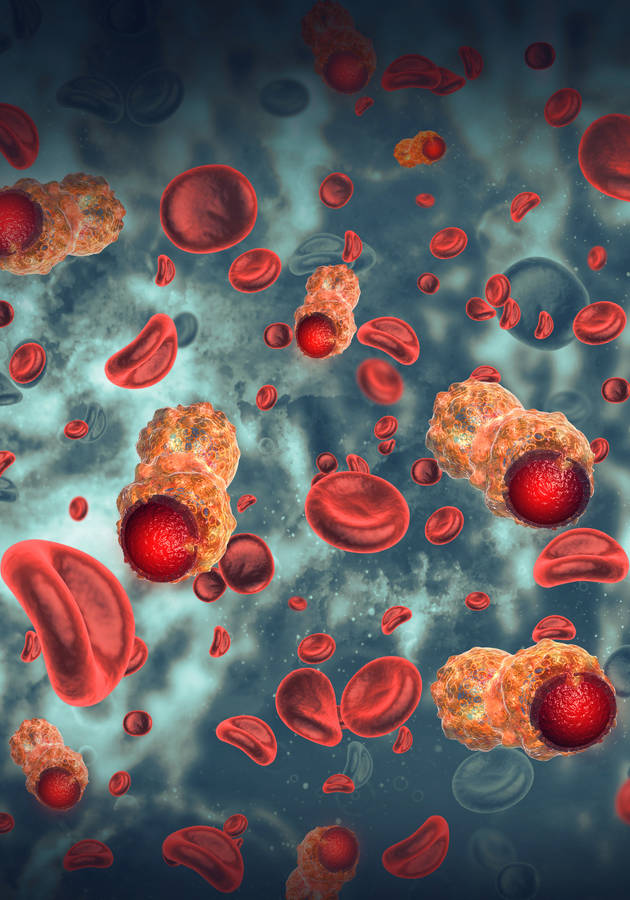Even without being instructed by a more experienced parent – let alone the recommendations of a specialized book – you’ve already learned almost everything you need to know about your children’s bodies, haven’t you? You not only know, for example, that a temperature above 37 degrees Celsius (98.6 F) is a fever, but also how to clean out a cut, so it doesn’t get infected, or even which foods are most likely to leave your child wired before bedtime.
And yet, as caring and even well-educated as you probably are, if we had to hazard a guess, we’d say that you know very little – if anything – of your child’s brain. How does it process the information it receives? Does it evolve? Is the brain of a 3-year-old less developed than that of a 6-year-old or some of the brain’s functions are simply dormant in the first case for the benefit of the child? Can you redirect the development of some of these functions past a certain point? Most fundamentally, is the brain of your child shaped by the experiences that you offer as a parent?
These are only some of the questions Daniel J. Siegel, a clinical professor of psychiatry at the UCLA School of Medicine, and Tina Payne Bryson, the child development specialist at Saint Mark’s School in Altadena, explore and answer in “The Whole-Brain Child,” the first (and the most celebrated) of their three collaborations.
The basic premise of the book is that some parts of a child’s brain, mostly the emotion-related ones, inevitably dominate the other parts, related to logic, because these develop much later. The authors suggest 12 strategies to deal with this biological reality, casually neglected in traditional parenting as a result of ignorance and false expectations.
“By understanding a few simple and easy-to-master basics about how the brain works,” Siegel and Bryson write in the first chapter, “you’ll be able to better understand your child, respond more effectively to difficult situations, and build a foundation for social, emotional, and mental health.” Our summary is your shortcut to achieving this in the next 12 minutes.
Integrating the left and the right brain
As you know full well, your brain is divided into two hemispheres, left and right. These two are so different from each other that some scientists jokingly say that each side of your brain has a “mind of its own.”
Your left brain, for example, loves and desires order. It is logical, literal, linguistic (it likes words), and linear (it puts things in a sequence or order) – to use four adjectives that all begin with the same letter. Your right brain, on the other hand, is holistic and nonverbal. In other words, it cares about the big picture (the meaning and feel of an experience) and specializes in images, emotions, and personal memories.
Simply put, your left brain is all about the letter of the law and the text, and is best seen at work in nuanced language-based thinking of this sort: “I didn’t shove her: I pushed her!” The right brain, in contrast, is all about the spirit of the law and the context, about all those “gut feelings” and heart-felt correlations that defy language and rational thinking: “I’ll die if you leave me.”
Now, the right hemisphere of a child’s brain develops first and faster than its left counterpart. As a consequence, trying to explain to your kid anything rarely leads to something. Otherwise stated, the reason why arguing with your 3-year-old twins is a lost cause is not their stubbornness, but their biological incapability of understanding your rational arguments. But trying to engage merely the child’s left brain is not a good idea as well, because the reliance on a single hemisphere results in a one-dimensional being.
As suggested already in the title of Siegel and Bryson’s book, you have to help your children develop both hemispheres of their brains. Two strategies can help you in helping your kids use their logical left brain and emotional right brain as a team.
Whenever your children are upset, you must first find a way to connect with them emotionally – right brain to right brain. Only after you notice they are more in control and more receptive, it’s time to bring in the lessons and the disciplinary measures – the left brain to left brain discussion. Remember: you can redirect rationally only after connecting compassionately.
Helping people shape their unhinged and unexamined right-brain emotions into meaningful stories is basically how most psychiatrists earn their money. Do something similar for your kids: help them tell the story of what’s upsetting them, because that way, you’ll help them include their left brain in the problem as well.
Integrating the upstairs and downstairs brain
Just like there are, horizontally, two opposing hemispheres in your brain, there are, vertically, two opposing behavior-molding centers as well.
The first one – dubbed “the downstairs brain” by Siegel and Bryson for the sake of simplicity – is administered by the oldest evolutionary part of your brain (the almond-shaped amygdala) and, consequently, is responsible for the most primitive aspects of your being: basic functions, like breathing and blinking; innate reactions and impulses, like fight and flight; and strong emotions, like anger and fear.
On the other hand, the “upstairs brain” – made up of the cerebral cortex and its various parts – is much more evolved and is where more intricate mental processes take place, such as thinking and imagining. It is the upstairs brain that is responsible for some of the most cherished traits of human (and children’s) nature, such as sound decision-making and planning, self-understanding and self-restraint, empathy and morality.
Unsurprisingly, children come prepacked with a fully functional downstairs brain, and their upstairs brain is “under construction” during childhood and adolescence. Because of this, often (and especially in high-emotion situations) the upstairs brain of your kid can be “hijacked” by the downstairs brain, and it is your job as a parent to help the former emerge victorious sooner, rather than later. These three strategies should help:
Shouting things such as “Because I said so!” in high-stress situations merely makes things worse because it further triggers the downstairs brain. To soothe it, try engaging the upstairs brain instead by asking your children what’s happening, requesting a worded description of the problem. Also, ask them to offer themselves a solution to the problem, giving them all the time and resources they need.
As they say, prevention is better than cure. Therefore, don’t hesitate to exercise the upstairs brain of your kid as often as possible, and especially when there are no problems whatsoever. A good way to do this is to play “What would you do?” type of games with your children.
Physical exercise is not only the easiest but also arguably the best way children can soothe their out-of-control lower brains. Just allowing your children to run a bit – whenever contact is lost with their upstairs brain due to the sheer amount of homework – should restore balance in no time.
Integrating memory for growth and healing
Memory is neither a mental file cabinet nor it works like a photocopy machine. In other words, we neither remember most things accurately (even when we are absolutely sure they happened in a certain way) nor are we able to call up the majority of them by will.
In truth, only one part of your memories can be described in a conventional manner, that is to say, as “conscious recollections of past experiences;” to describe this part, psychologists use the phrase explicit memory. The other (and possibly more important) part of your memory is the implicit memory: it is what allows you to change a diaper routinely without even knowing you’re remembering a routine.
Explicitly, you remember events and images; implicitly, you remember feelings and atmosphere. Unfortunately, there can be mix-ups in the latter case: you can, for example, still detest oranges because, almost unknown to you, their smell was the first one that hit your nostrils when you fell from your bike a decade ago.
Such vaguely remembered past experiences affect children in debilitating ways. Your job as a parent is to help them make their implicit memories explicit, which is the first step toward overcoming them.
Replay memories for your children the way you would a scary movie: “when a child is reluctant to narrate a painful event,” write Siegel and Bryson, “the internal remote 3-year-old her pause, rewind, and fast-forward a story as she tells it, so she can maintain control over how much of it she views.”
Exercise your children’s memory: give them lots of practice by making recollection a part of your family’s daily life. Play the “Remember that time…?” game with them everywhere: in the car, at the dinner table, wherever. You can’t lose.
Integrating the many parts of the self
Even though it intuitively feels that we are integrated individuals, in reality, we are many different people at once: dreamers for some of our friends and realists for our bosses, football experts for the guys at the pub, and history buffs/techno-music enthusiasts for our love interests. In a way, our brain can be pictured as a bicycle wheel (called the wheel of awareness by the authors of the book), its hub our decision-making prefrontal cortex, its rim a list of everything we can pay attention to – memories, thoughts, perceptions, feelings, dreams, body sensations.
Now, just like adults, kids sometimes get stuck on one particular point on the rim of their wheel of awareness. When they do, they stop developing other facets of their personalities and slowly grow into one-dimensional adults with inflexible objectives: to become millionaires, to reach 10,000 subscribers, to get that particular boy. This is not merely potential-limiting – it is also unhealthy since it often leads to a lifetime of unhappiness. Act early and use these three strategies to help your children constantly refocus their attention.
From time to time, remind your children that feelings are “temporary states, not enduring traits.” Teach them that feelings come and go (on average, they last a minute and a half), and being lonely today doesn’t mean that you’ll become a loner.
Help your children pay attention to what’s going on inside them, i.e., make them aware of their SIFT: Sensations, Images, Feelings, and Thoughts. All of these matter: show them that.
As defined by Siegel, mindsight means “understanding our own mind as well as understanding the mind of another.” Exercise it in your children by teaching them how to calm themselves and helping them focus their attention on a particular subject.
Integrating self and other
You don’t need a scientist to tell you that your brain has a built-in capacity for social interaction. After all, just watching someone in pain makes you feel pain as well. We are, in a way, wired to be “we.” So, watch for ways to capitalize on this trait of the human brain by creating positive mental models of relationships for your children. Use these two strategies for maximum effect.
Make family life fun through playful parenting. Play games and act silly with your kids: show them that being with other people is enjoyable and pleasing.
“Instead of an obstacle to avoid,” write Siegel and Bryson, “view conflict as an opportunity to teach your kids essential relationship skills, like seeing other people’s perspectives, reading nonverbal cues, and making amends.” Teach them to feel empathy, to argue with a “we” in mind.
Final Notes
Though it sometimes uses a rather simplistic language and one-dimensional analogies to illustrate the inner workings of a child’s brain, “The Whole-Brain Child” is based on some of the most recent scientific findings in neurobiology and child development and excellently explains away the apparent irrationality of the behavior of children at different stages of their development.
Myth-busting, nicely structured, and brimming with real-world “aha” scenarios and anecdotes, “The Whole-Brain Child” is – as the Raising Happiness author Christine Carter, Ph.D., has written – “chock-full of strategies for raising happy, resilient children.” We guarantee you that you’ll know at least half of them by heart and practice by routine just a few months into parenting!
12min Tip
Play the “what would you do?” and “remember that time…?” games with your children: it should help them understand their past more clearly and will prepare them for the future much better.





























